The Estrada Real or Royal Road is a series of historic routes in Brazil, spanning the states of Minas Gerais, São Paulo and Rio de Janeiro. Built in the 17th/18th centuries by labourers enslaved by the Portuguese colonists, these roads (a total of 1,600km in length) were important to facilitate the transportation of gold, diamonds and other minerals in the hinterland of present-day Minas Gerais to the ports along the Atlantic coast such as Rio de Janeiro, and on to Portugal. The Minas gold rush, which brought much wealth to Portugal and helped to finance the Industrial Revolution in England, led to flourishing towns along the roads, many of which saw the construction of ornate government buildings, mansions and elaborate baroque churches.
Estrada Real road trip in Brazil
These days, the Estrada Real is a unique way for visitors to appreciate the lush nature and rich historical and cultural legacy in this part of Brazil. If you’re considering a Brazil road trip, the Estrada Real is one route I can recommend. The route starts in Diamantina (the centre of diamond mining in the 18th/19th centuries and a UNESCO World Heritage town), then splits into two roads: one continues to Paraty in São Paulo state and the other ends in Rio de Janeiro.


Places to visit along the Estrada Real
I joined my two friends, Claudia and Mauricio, on our Brazil road trip from Belo Horizonte to Rio de Janeiro, stopping at various towns along the way and staying at beautiful pousadas (lodges) for a total of four days. Check out my video of our road trip:
Ouro Preto
We kicked off our road trip in Belo Horizonte, Brazil’s sixth largest city, and headed southeast towards our first stop: the historic town of Ouro Preto (map). The name literally translates as ‘Black Gold’, a reference to its mining past. In 1980, the town was designated a UNESCO World Heritage site due to its significance during the Minas Gold Rush but also because of its amazing baroque architecture.

Situated on several hilltops and valleys, Ouro Preto, with its steep cobblestone streets lined by colourful houses, grand buildings and baroque churches, is a gorgeous sight!

At the height of its wealth in the 18th/19th centuries, Ouro Preto was the capital of Minas Gerais and attracted artists and scholars from around Brazil and Europe. These days, its rich colonial past can still be observed, particularly in its ornate churches. Decorated in gold and featuring sculptures by the famous artist Aleijadinho, these 18th/19th century churches are literally breathtaking. I couldn’t take photos inside the churches but believe me when I say that I have seldom seen such incredible baroque interiors, all draped in gold!





Pousada de Mondego
We stayed at the charming Pousada do Mondego (Booking.com) in the heart of Ouro Preto, directly opposite the artisans market. This hotel, with its colonial ambiance, colourful paintings and antiques, is an absolutely gorgeous place to stay at. The rooms are spacious and neat, and despite its old world character, the hotel offers free (high-speed) wifi and there’s free parking around the corner.


Search for hotels in Ouro Preto (via Booking.com).
Ouro Preto is perfect for a stay of a few days as you’ll have time to explore its atmospheric centre, steep streets and awe-inspiring churches. For places to eat, I can recommend Bené da Flauta restaurant (next to the San Francis de Assisi church) and Contos de Réis restaurant. Both serve local specialties in cosy surroundings.


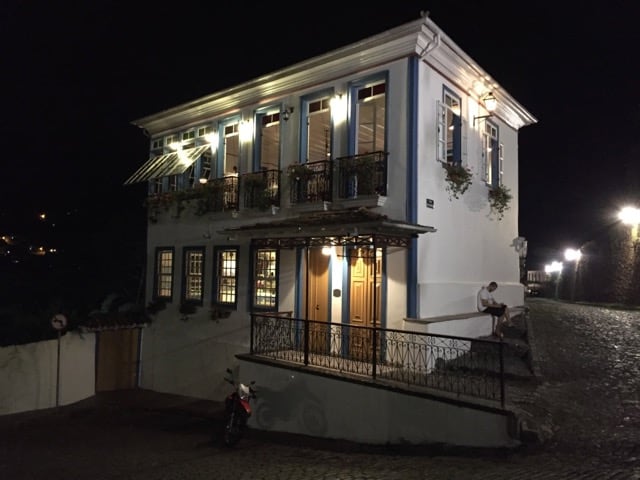

Mariana
From Ouro Preto, we drove the short distance to Mariana, the oldest city in the state of Minas Gerais. Like Ouro Preto, Mariana boasts a rich, gold-laden history and for a time, it was the capital of Minas Gerais, until Ouro Preto ran away with the honour. This 17th century town still very much retains its colonial feel, with beautiful historic buildings and churches.

Congonhas
We left Ouro Preto early in the morning and after making a big detour to visit the Inhotim Gardens (read about my visit to Inhotim), driving past verdant mountains and valleys, farmlands and little villages, we arrived in Congonhas (map), another of the historic towns along the Estrada Real. Pretty much like Ouro Preto, Congonhas is situated on several hills and valleys, and is famous for its baroque colonial architecture. The most iconic attraction of the town is undoubtedly the Basilica (Santuário do Bom Jesus do Matosinhos), a UNESCO World Heritage site, with its dramatic soapstone sculptures by Aleijadinho.
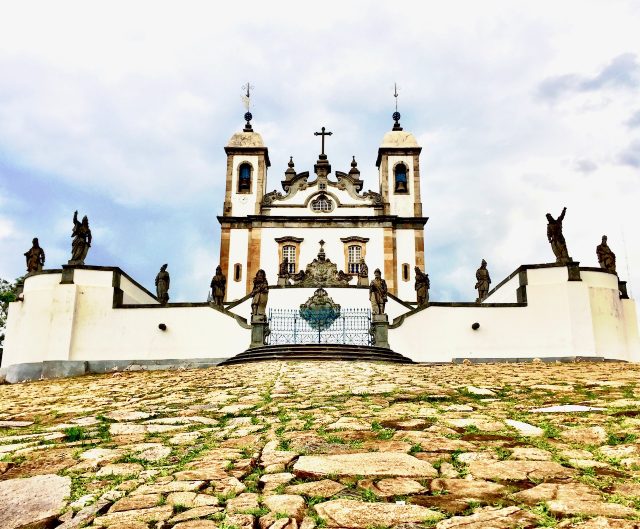

Tiradentes
From Congonhas, we continued our drive to the town of Tiradentes (map), another picturesque town along the Estrada Real. This 18th century town was named after a Brazilian national hero who led an uprising against the Portuguese colonialists.




Tiradentes, with its quaint cobblestone streets and houses with colourful façades, is a must-see along the Estrada Real. Its churches are, quite literally, gems with ornate golden frescoes, altars and statues, a testament to the region’s gold rush days. The town is nowadays a popular tourist attraction with lots of art galleries, cafés and restaurants. One thing I absolutely adored about Tiradentes are the colourful doors and windows of the houses!
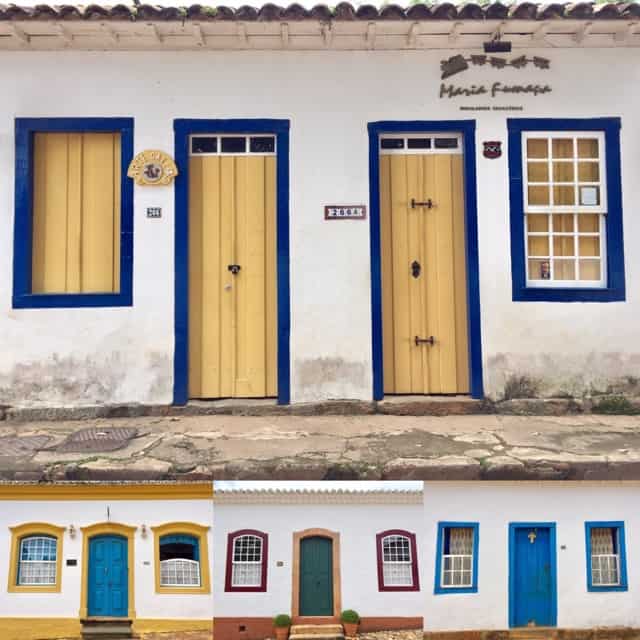
Solar da Ponte
We stayed at the lovely Solar da Ponte (Booking.com) pousada in the centre of town. The pousada has large rooms, free Wifi, parking, lush tropical gardens and a swimming pool. It’s also only a stone’s throw away from Tiradentes’ major sights.


Search for hotels in Tiradentes (via Booking.com).
Petrópolis
From Tiradentes, we continued on the last leg of our road trip to Rio de Janeiro. On the way, we stopped at Petrópolis (map). Nestled in the forested hills of the Serra dos Órgãos, Petrópolis is also known as the Imperial City as it was the Summer Residence of the last Brazilian Emperor (Emperor Pedro II) in the 19th century. The town is a great place to visit as it has various historic attractions such as the Summer Palace (now the Imperial Museum), the Cathedral, the Crystal Palace and many beautiful 19th century mansions, including the old residence of Santos Dumont (the great Brazilian aviation pioneer). The pleasant climate and tree-lined avenues make Petrópolis a lovely place to stroll around.

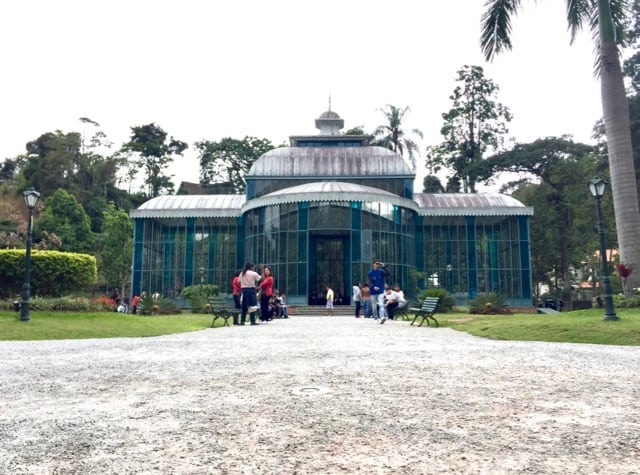


Search for hotels in Petrópolis (via Booking.com).
From Petrópolis, we made our way through stunning mountainous landscapes before reaching the outskirts of Rio de Janeiro. I had a terrific time with Claudia and Mauricio on our Estrada Real road trip. Fabulous company, historic sights, quaint towns and many history lessons sure made this a memorable one! And I had lots of fun learning about and pronouncing the names of the places and important historical figures. If you love Brazil, gorgeous colonial towns, history and baroque architecture, add the Estrada Real to your bucket list!
Read about my stay in Rio de Janeiro and the sights Claudia and Mauricio showed me.
Practical tips
You can choose to start this road trip in either Rio de Janeiro or Belo Horizonte. Both have international airports. There are frequent flights from major cities in Brazil to Belo Horizonte.
Various nationalities require a visa for Brazil. I recommend arranging a Brazil visa in advance.
Note: a big thank you to Inhotim Park, Pousada do Montego and Pousada Solar da Ponte for hosting us during our road trip. As always, all opinions expressed above are mine only.





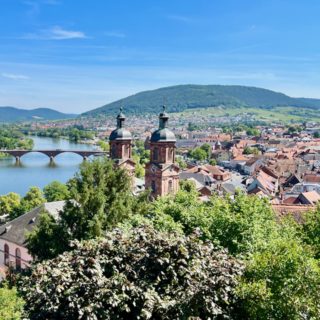






[…] Read about my Brazil road trip. […]
[…] days, the Estrada Real is the only way for visitors to explore the lush nature and rich cultural and historical legacy in […]
This drive is definitely a great excuse to return!
Thanks for your comment.
Cheers,
Keith
I can’t believe I missed this on my gap year. There is just so much to see in Brazil, it is easy to miss things I guess. Oh well, a great excuse to return.
Thank you Isadora for your comment! Glad you enjoyed my post. I absolutely enjoyed the Estrada Real!
Cheers,
Keith
Amazing, Keith! This isn’t a very famous route even among Brazilians, but it is worthy to hit the road at Estrada Real, isn’t it? That’s an awesome way to find out about history and culture of the colonial Brazil. Another great way for tourists, specially the solo and on tight budget ones, is taking a bus to move around these beautiful cities. I recommend this site to find tickets and schedule easily and do it all on the internet: https://brazilbustravel.com/
Thanks for sharing your experience there and letting other people know about it!! (:
Indeed! A VERY good reason to return! 🙂
Nice find. I lived in Belo Horizonte for 5 months and none of my Brazllian friends mentioned this…oops. Now I have yet another reason to return.
Turner
Hi Chris,
Me neither until I was there! My Brazilian friends suggested it and it was a great surprise. I didn’t encounter many foreign tourists along the route.
Cheers,
Keith
Interesting. I have never heard of this route before but damn – really beautiful. Seems like it wouldn’t be overly touristic either.
Thanks! Glad you enjoyed the video! 🙂
Great video! And that background music totally brought me to Brazil 😉
Hi Brittany,
I hope you get to drive this route one day. It sure was an amazing experience!
Cheers,
Keith
This is one place I definitely plan on checking out when I make it to Brazil … thanks for the travel inspiration!
[…] BH. Read more about Inhotim on Velvet Escape. If you love culture and history, be sure to plan a road trip along the Estrada Real from BH to Rio de […]
[…] place about?”, I asked my good friends Claudia and Mauricio as we left Belo Horizonte on our road trip to Rio de Janeiro, Brazil. Claudia laughed and corrected me: “It’s Inhotim! And it’s a botanical […]
[…] invitation to speak at a conference in Belo Horizonte (read about my trip to Belo Horizonte and my road trip along the Estrada Real), I made sure I got to spend a few days in Rio on my way back home. This time, I was joined by my […]